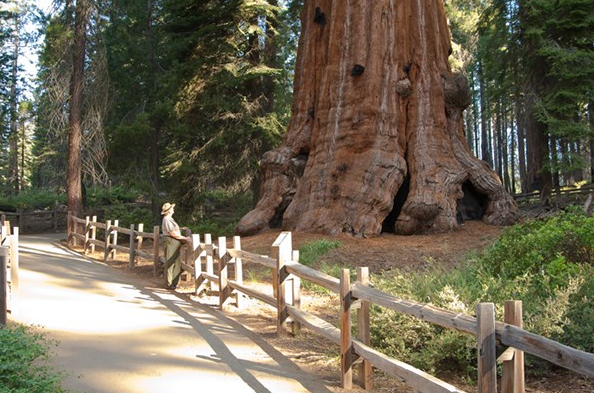Have you ever wondered, “How much does a tree weigh?” Understanding the weight of trees can provide valuable insights into their structural integrity, ecological significance, and impact on the surrounding environment. This article delves into an exploration of the several factors that influence tree weight, and provides insight into estimation techniques and the significance of accurate weight calculation. Whether you are an urban planner, a forestry enthusiast, or simply curious about nature, this piece is designed to satiate your interest and foster a greater appreciation for the importance of tree weight. We aim to unveil the mysteries and reveal the secrets hidden within the grandeur of these magnificent natural structures.
Factors affecting the weight of wood
Species and tree types
The weight of a tree is primarily influenced by its species and type. Different species exhibit varying density and growth characteristics, resulting in variations in weight. For example, hardwoods like oak and mahogany are denser and heavier than softwoods like pine and spruce. Also, evergreen trees typically weigh more than deciduous trees because of their year-round foliage.
Age and size
A tree’s age and size also play a decisive role in its weight. As a tree grows, it accumulates biomass from leaves, branches, trunks, and roots. Therefore, older and larger trees tend to weigh more than younger or smaller ones due to their increased biomass accumulation. The weight distribution in a tree also changes as it ages, and older trees have a higher proportion of weight in the trunk and roots.
Environmental conditions
Environmental conditions, such as soil quality, climate, and access to water and nutrients, can affect a tree’s weight. Trees growing in fertile soil with optimal moisture and nutrient levels tend to have healthier and more extensive root systems, resulting in a higher overall weight. Climate factors, such as temperature and rainfall, can affect a tree’s growth rate and, thus, its weight.

Measuring the weight of the wood
Estimation of the weight of the wood
Measuring the weight of a fully-grown tree is a complex task. Instead of physically weighing the entire tree, experts use different estimation techniques. A commonly used method is the “allometric equation,” which involves measuring the tree’s diameter at breast height (DBH) and height to calculate an estimated weight using established mathematical models. Based on extensive data collected from different species, these equations consider the relationship between wood dimensions and weight.
Technology and advanced techniques
Technological advances have led to the development of more accurate methods for measuring the weight of trees. Laser scanning, commonly known as LiDAR (Light Detection and Ranging), is a remote sensing technique that uses lasers to generate precise 3D models of trees. By combining these models with algorithms, researchers can estimate the weight of the trees more accurately. This technology is beneficial for studying large and inaccessible trees in forests.
Calculation of the weight of a tree
Allometric equations
A standard method of estimating a tree’s weight is using allometric equations. These equations establish a relationship between easily measurable tree characteristics, such as diameter at breast height (DBH) and size, and the tree’s weight. While the exact equations may vary for different tree species, the general principle remains consistent.
Steps for calculating the weight of the wood
Follow these steps to calculate the weight of a tree using allometric equations:
Step 1: Measure the diameter at breast height (DBH)
DBH is measured at a standardized height of 1.3 meters (4.5 feet) above the ground. Use a measuring or diameter tape to get an accurate measurement of the diameter of the wood.
Step 2: Measure the height of the tree
It is essential to determine the tree’s height to get an accurate weight estimate. You can use several methods to measure the height, e.g., clinometers, laser rangefinders, or altimeters. Choose the most suitable method based on the size and availability of the tree.
Step 3: Obtain the allometric equation
Research or consult reliable resources to find the appropriate allometric equation for your evaluating tree species. These equations can be found in scientific publications, forestry textbooks, or online databases.
Step 4: Apply the allometric equation
Once you have the correct equation, plug in the measured values for DBH and height to calculate the estimated weight of the tree. The equation will give a result in terms of mass, typically in kilograms or tonnes.
It is important to note that although allometric equations provide reasonable estimates, they may not account for all factors that affect tree weight, such as variations in tree density or specific growing conditions. Therefore, the calculated weight should be considered an approximation rather than an exact measurement.

Consequences of an accurate weight calculation
Logging and forest management
Knowing the weight of the trees is essential for logging. Accurate weight estimates help determine transport logistics, calculate timber volume, and plan sustainable harvesting methods. Accurate weight assessments contribute to the efficient management of forest resources and the optimization of logging.
Technology and Infrastructure
In urban planning and infrastructure development, it is vital to understand the weight of trees to design robust structures that can withstand the load from the trees. Accurate weight calculations help assess the potential impact on pavements, roads, underground utilities, and nearby buildings, ensuring the safety and stability of the built environment.
Conclusion
In conclusion, the question of “How much does a tree weigh?” reveals the intricate nature of these remarkable organisms. By understanding the factors influencing tree weight, we gain a deeper appreciation for their resilience, ecological role, and impact on our surroundings. Accurate estimation methods, such as allometric equations and advanced technologies like LiDAR scanning, provide:
- Valuable insights into tree weight.
- Enabling us to make informed decisions in forestry management.
- Timber harvesting.
- Urban planning.
So, the next time you marvel at the grandeur of a tree, remember that its weight encompasses more than just its physical presence—it represents a complex web of biological processes and environmental interactions. How much does a tree weigh? It’s a question that uncovers the weighty significance of these living giants in our world. Read more article about HOW MUCH DOES A PINE TREE WEIGH? in Avi hoffman Garden.

Frequently Asked Questions (FAQs)
A: The weight of a tree can vary depending on various factors, including species, age, and size. On average, a mature tree can weigh anywhere from a few hundred kilograms to several tons.
A: The weight of a 20-foot tree can vary depending on the species. As a rough estimate, a 20-foot tree may weigh anywhere from a few hundred kilograms to a few tons. The tree’s species, age, and environmental conditions will influence its weight.
A: The weight of a tree can vary significantly depending on its species, age, and size. As a general guideline, a fully grown tree can weigh anywhere from a few to tens of tons. It’s important to note that the weight of a tree can vary greatly depending on these factors.
A: The weight of an oak tree can vary depending on the oak species, age, and size. On average, mature oak trees can weigh anywhere from a few to several tens of tons. Remember that the weight can vary significantly depending on the specific tree’s characteristics.
A: The most giant tree in the world, in terms of sheer volume, is the General Sherman tree, located in Sequoia National Park, California, USA. This huge sequoia tree stands approximately 275 feet (83.8 meters) tall and has an estimated volume of 52,508 cubic feet (1,487 cubic meters). While it’s difficult to determine its exact weight, estimates suggest it could weigh around 2,700 tons.
It’s important to note that the weight of a tree can vary greatly depending on its specific characteristics and environmental conditions. These figures serve as general estimates and may not apply to every tree.







